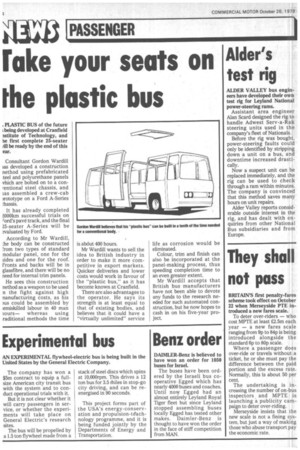rake your seats on the plastic bus
Page 26

If you've noticed an error in this article please click here to report it so we can fix it.
; PLASTIC BUS of the future ;being developed at Cranfield istitute of Technology, and he first complete 25-seater rill be ready by the end of this ear.
Consultant Gordon Wardill Las developed a construction nethod using prefabricated teel and polyurethane panels vhich are bolted on to a conTentional steel chassis, and las assembled a crew-cab rrototype on a Ford A-Series thassis.
It has already completed 1000km successful trials on 7ord's pave track, and the final 6-seater A-Series will be waluated by Ford.
According to Mr Wardill, :he body can be constructed rom two types of standard modular panel, one for the -sides and one for the roof. Fronts and backs will be in glassfibre, and there will be no need for internal trim panels.
He sees this construction nethod as a weapon to be used n the fight against high nanufacturing costs, as his ms could be assembled by iemiskilled labour in 40 man lours— whereas using raditional methods the time is about 400 hours.
Mr Wardill wants to sell the idea to British industry in order to make it more competitive in export markets. Quicker deliveries and lower costs would work in favour of the "plastic bus," as it has become known at Cranfield.
There are also advantages to the operator. He says its strength is at least equal to that of existing bodies, and believes that it could have a "virtually unlimited" service life as corrosion would be eliminated.
Colour, trim and finish can also be incorporated at the panel-making process, thus speeding completion time to an even greater extent.
Mr Wardill accepts that British bus manufacturers have not been able to devote any funds to the research needed for such automated construction, but he now hopes to cash in on his five-year project.
























































































































